Doing what we do, we inevitably get questions on cars, whether from friends or new acquaintances at social events. Pipping “what’s the best car you’ve driven?” to the finish line is “is the XXX good ah?” or “XXX and XXX – which is better?” Fill in the blanks with the hottest new car of the season.
The As and Bs in these questions are often very different cars. While those who know and like cars can easily rattle off a list of models in the B, C and D segments, it’s likely that the layman – which let’s not forget, is the majority or car buyers – isn’t so into compartmentalising.
It’s two different ways of seeing it – one is to compare cars according to their class, and the other is essentially: What can I get for X amount of money? The former will end up with a pretty line of apples from different countries, while the latter will have a basket of fruits.
Car guys don’t like the fruit basket, preferring the compartments. Some get angry at the mention of a different bodystyle, even if it’s similarly priced. We get the point. But segments are no longer so well-defined, no thanks to the carmakers themselves.
The typical B-segment SUV, at least in Malaysia, is the Honda HR-V. But others carrying the B-SUV label range from the compact Perodua Ativa to Euro-market raised hatchbacks such as the Renault Captur and Hyundai Kona. Naturally, these are less capacious than the Honda. And then there’s the Subaru XV, which is the size/price of the HR-V but has C-segment (Impreza) bones.
It gets more confusing when you look at Toyota. We’d think of the new Corolla Cross as the big T’s answer to the HR-V. That’s logical, right? But it carries the Corolla name (traditionally C-segment, like the Civic) and is marketed as a C-SUV as well. Blurred lines continue with Mazda. The tiny CX-3 is based on the 2, and it’s clearly a B. If so, the larger and more sophisticated CX-30 should be a C, but then, where would the CX-5 – traditionally C – sit in the family photo?
So, should you still be comparing cars strictly from a single traditional segment? We don’t think so, as the lines aren’t as clear cut as in the old days; in any case, Malaysia is a unique market where CKD/CBU is a factor in pricing, which further complicates the price-segment relationship. Better to just look at what you can get for a certain budget, no? Here are some scenarios.
Perodua Ativa vs Proton X50
The Proton X50 was launched late last year, and Perodua’s Ativa joined the market in March this year. Both are SUVs, and both are from national makes – this led to automatic comparison by many. Which is better?
Well, there’s a short answer, and it’s the X50. It better be better though, as the X50 Flagship is over RM30k costlier than the Ativa AV. That difference can buy you an Axia! Even the base X50 Standard is over RM7k more expensive than the top Ativa, so these two models do not overlap.
Not in size and kit either. The Ativa is a “A to small B” sized, while the X50 fits nicely into the B-SUV size template. At 4,330 mm long and 1,800 mm wide, the Proton’s footprint is a substantial 265 mm longer and 90 mm wider than the Ativa, respectively. It’s 2,600 mm wheelbase is 75 mm longer. See both cars shoulder-to-shoulder here.


The smaller car has a smaller engine, too. Perodua’s first turbo engine is a 1.0L three-cylinder unit, which is half a litre down on the the X50’s turbo triple. Kit wise, the Perodua excels in driver assist safety tech and lighting – the base X50 that’s RM7k costlier is nowhere near in equipment, having just four airbags.
If you look at the sales breakdown according to variants, the Ativa is overwhelmingly popular in top AV form, which means that buyers want all that safety kit. We can safely assume then that they won’t consider the sparse X50 Standard. Likewise, style conscious X50 buyers like the premium feel of the Flagship’s cabin (the top seller) and won’t bat an eyelid at the Ativa.
What Perodua is really gunning for is the non-national B-segment sedan. The Ativa tops out at RM72k, which is just below the RM74+k starting price of the Honda City and Toyota Vios (the Nissan Almera, also with a 1.0L turbo, is from RM80k). Armed with a more in-trend SUV body, and unprecedented safety/equipment at this price point, the Ativa is a good answer to the “what can I get for RM70k to RM80k?” question. It all boils down to SUV or Sedan – the pros and cons.
Toyota Camry vs BMW 3 Series
This was not really a thing back in the day, but it is now. Remember the day where mass market brand D-segment sedans could be had for below RM150k? The base XV50 Camry was launched in 2012 just below that mark, while the XV40 started at below RM140k in 2006.
Ditto arch rival Honda Accord, with Korean contenders Hyundai Sonata and Kia Optima often undercutting the T&H stalwarts in price and specs. Today, these D-segment sedans are all rather premium options, and have become “RM200k cars”.
Without the SST exemption that’s in place till end-2021, the current Camry 2.5V is priced at RM196,888, while the Accord 1.5 TC-P in pearl white is RM196,300. With full sales tax, the new Sonata – a CBU Korean import – is yours for RM206,888. The Sonata YF design flair might be back, but the old price is dead and buried.
There are a couple of reasons behind this price movement. Malaysian taxes don’t help of course, but these D-segment sedans are no longer what they used to be. For one, the below RM150k examples cited above were for base variants with 2.0 litre engines. While style is subjective, today’s “beautiful monster” Camry is 2.5L-only and is much better equipped than the XV40. Also more swoopy is the current Accord, which is powered by a 1.5L turbo engine with over 200 hp. The cars are costlier out of the factory.
Meanwhile, premium compact sedans from the likes of BMW and Mercedes-Benz have been hovering close to the RM200k border. We’ll take the 3 Series as example. The current G20 generation has pushed the entry price for the 3 Series back up again – the latest 320i update with the Live Cockpit Pro pack (10.25-inch centre screen + 12.3-inch digital instrument panel) is RM230,764, or RM243,889 with the five-year warranty plus service package.
In the current SST-free window, that’s a RM42k difference between base 3 Series and Camry. If you’re shopping in the RM200k segment, RM40k, while not insignificant, isn’t a big mountain to climb for the professionals, business owners and top sales achievers seeking to reward themselves.
The gap used to be even smaller. The previous generation F30 had a 318i entry variant with an RRP of just above RM200k. Virtually new pre-registered units with low miles were being offered for around RM170k at the end of the F30’s run. There’s no 318i now, but BMW does sell a 218i Gran Coupe for RM211,367. Sporty and flamboyant, the 2GC has been rather well received in Malaysia.
Camry or BMW will boil down to your priorities. Many will be lured by the prestige of the propeller badge, and one can’t go wrong with the sports sedan. Now that it has a nice interior, the 3 Series’ case as the one car that does it all is stronger than ever. The German premium brands also have cheaper pre-reg units and a variety of financing options; things that can tip the balance for those on the fence.
However, the Toyota is much bigger and more comfortable; and if peace of mind is a factor, there can only be one choice. A Camry that’s also desirable and good to drive? The XV70 is definitely not your uncle’s boat.
Consider all options
Comparing cars by size segments works as a rule, and it worked very well when the car market was more simple. But with new derivatives aplenty, it’s no longer as easy as ABC, literally.
Also, in Malaysia, there’s the issue of national cars, CKD vs CBU, hybrid incentives and customised incentives, among other things that make pricing unequal among otherwise equivalent cars. And then there are pick-up trucks, which are taxed differently although they’re now urban and fancy.
Thus, the “what can I get for RMXXX?” question will not just throw up a few classmates, but often a couple of outliers that one might not have originally shortlisted. Someone who is looking at say, a Honda City, will naturally compare it to the Vios and Almera. But the same money can also get you the Ativa, X50 and Toyota Yaris. The point is to find the ideal car for your budget, not the best B- or C-segment car out there.
Why limit yourself to one particular class, when your budget allows for a wider range of options? Sedans, SUVs and hatchbacks – yes, it’s not apples to apples, but when they’re all priced in the same ballpark, surely there’s no harm in considering the fruit basket? You might find some sweet peaches in there.
The post Should you be comparing cars from different segments in Malaysia? Ativa vs X50, Camry vs 3 Series appeared first on Paul Tan's Automotive News.





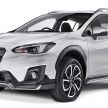
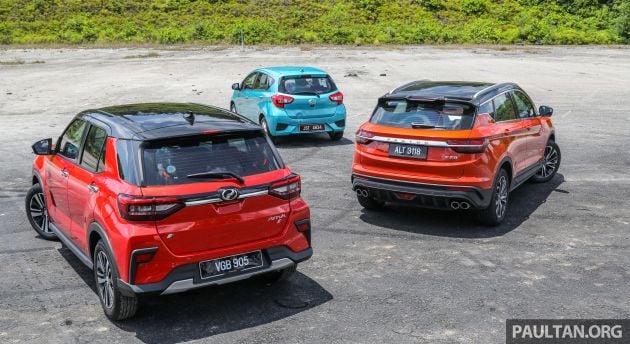
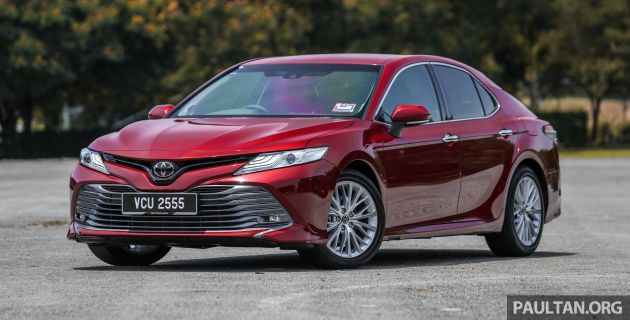
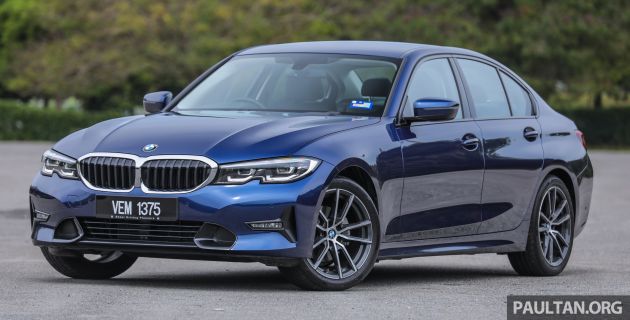
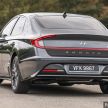
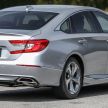
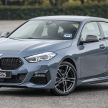
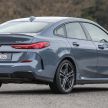
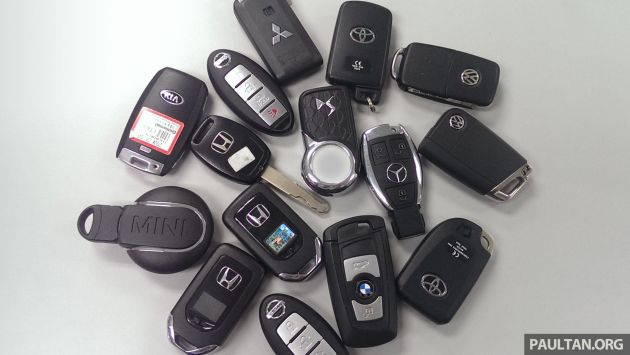
0 Comments